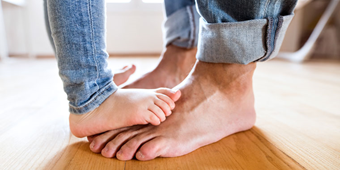When Osteoarthritis Develops In the Elbow

Find Your Perfect Match
Answer a few questions and we'll provide you with a list of primary care providers that best fit your needs.
The elbow is one of the least likely joints for osteoarthritis to show up. The wear and tear of cartilage that leads to osteoarthritis is more likely to occur in weight-bearing joints like the knees and hips.
But in the elbow, osteoarthritis can result from injuries and overuse. Injury prevention is key to avoiding osteoarthritis in the elbow. If you’re physically active or have an occupation that requires repetitive exertion of your elbows you can reduce your risk of injury by strengthening the muscle around the joint.
Your risk of elbow arthritis after an injury increases if the injury required surgery, it resulted in loss of joint cartilage, or the joint can’t be repaired to preinjury condition. You can lower the risk by seeking treatment of the injury as soon as possible.
Osteoarthritis Signs And Symptoms
Telltale signs of elbow osteoarthritis include a feeling of grating or locking in the joint. This is caused by bone-on-bone contact as the smooth cartilage wears away and loose pieces of cartilage or bone that block the joint’s movement.
Other symptoms include pain and loss of motion in the elbow. Later on in the progression of elbow osteoarthritis your ring finger and small finger may feel numb and tingle. This happens due to swelling in the joint that increases pressure on the ulna nerve.
In diagnosing elbow osteoarthritis, your health care provider may examine your elbow for tenderness or swelling, which can accompany pain and stiffness. She may have your elbow x-rayed to detect signs of joint damage from the arthritis.
Nonsurgical Treatment For Osteoarthritis
Treatment of elbow osteoarthritis usually begins with nonsurgical approaches, such as physical therapy, exercise, and activity modification. Surgery is typically considered as a last resort.
Medication is another common way to treat osteoarthritis in the elbow. Over-the-counter medications – nonsteroidal anti-inflammatory drugs (NSAIDs) including aspirin, ibuprofen, and naproxen – can provide relief.
If other pain medications and treatments don’t relieve your pain, your doctor may recommend a cortisone injection in the joint. This can provide temporary pain relief until symptoms progress enough to require additional treatment, such as surgery.
Surgical Treatment For Osteoarthritis
When nonsurgical treatment options don’t adequately relieve the symptoms of osteoarthritis in your elbow, your health care provider will likely talk with you about surgical treatment options. These include:
Arthroscopy: This outpatient surgical procedure allows the surgeon to repair damaged cartilage surfaces around your elbow joint and to remove lose pieces of cartilage and bone or release scar tissue that cause pain and hinder joint movement. Through small incisions, which shorten recovery time, the surgeon inserts a small camera for viewing the joint and small instruments for making the repairs.
Joint replacement: This is typically the choice when the joint surface has worn away completely. The surgeon removes parts of the elbow joint that are arthritic or damaged and replaces them with a metal, plastic, or ceramic device, a prosthesis, which is designed to move like a normal, healthy joint.
If you are too young or active to be considered for joint replacement, your doctor will talk with you about other available options.
Find Your Perfect Match
Answer a few questions and we'll provide you with a list of primary care providers that best fit your needs.
Source: American Academy of Orthopaedic Surgeons; Arthritis Foundation




